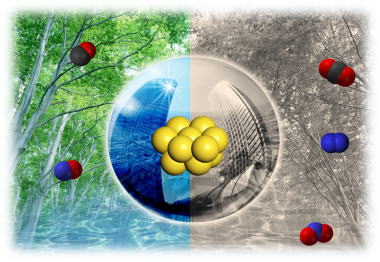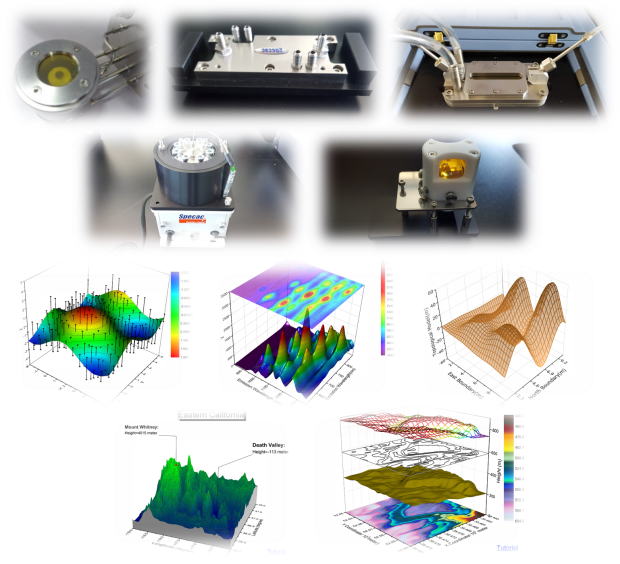ResearchResearch
「Heterogeneous Catalysis by Gold」
 Gold came under the spotlight when its nanoparticles were found to catalyze
the oxidation of carbon monoxide and hydrochlorination of ethylene in the
1980s. Since then, the use of Au in catalysis has found a wide range of
applications such as the oxidation of alcohols and aldehydes, epoxidation
of alkenes, hydrogenation of C=C ans C=O bonds, C-C and C-N coupling reactions
etc. Our group focuses on exploiting Au catalysis for environmental protections
and understanding underlying mechanisms of Au catalysis by means of in
situ/operando IR and Raman spectroscopy. Research topics on which we are
currently working are:
Gold came under the spotlight when its nanoparticles were found to catalyze
the oxidation of carbon monoxide and hydrochlorination of ethylene in the
1980s. Since then, the use of Au in catalysis has found a wide range of
applications such as the oxidation of alcohols and aldehydes, epoxidation
of alkenes, hydrogenation of C=C ans C=O bonds, C-C and C-N coupling reactions
etc. Our group focuses on exploiting Au catalysis for environmental protections
and understanding underlying mechanisms of Au catalysis by means of in
situ/operando IR and Raman spectroscopy. Research topics on which we are
currently working are:
(1) Air pollution control
Anthropogenic emission of nitrogen oxides (NOx) is one of the global concerns and poses a serious threat to human health
and the environment such as hotochemical smog, acid rain, ozone depletion,
and fine particle pollutions. We synthesize supported Au nanoparticles
activated by adding metal oxides, MOx (M=Fe, Ce etc.) and bimetallic Au-M (M=Pt, Pd etc.) nanoparticles and
test their catalytic performance of the reduction of nitric oxide by carbon
monoxide.
(2) Fine chemicals synthesis
Fine chemicals synthesis is one of the challenging tasks in the field of
catalysis. Our group explores environmentally-benign processes using Au
catalysis for the oxidation of alcohols and amines, C=C and C=N coupling
reactions.
(3) Wastewater treatment
Industrial waste in rivers and lakes pose a serious threat to the ecosystem
and human health. We fabricate Au catalysts that work for hydrogenation
of nitrates and nitrites, ozonation and photooxidation of persistent organic
compounds (POPs).
To provide fundamental insight into solid-liquid and solid-gas interfaces
during heterogeneous Au catalysis, we exploit in situ/operando IR and Raman
spectroscopy for monitoring "Chemical Events" under catalysis-working
conditions, e.g. high pressure and high temperature. In situ IR cells that
our group possesses are diffuse reflectance IR Fourier transform spectroscopy
(DRIFTS), flow-through attenuated total reflection IR spectroscopy (ATR-IR),
photochemical ATR-IR, high-pressure & temperature ATR-IR and electrochemical
ATR-IR. These cells are utilized to investigate Au-catalyzed reactions
descrived above.

バナースペース
In situ/Operando Analysis Group (2304)
Prof. Dr. Nobutaka Maeda
(前田修孝)
nobutakamaeda@dicp.ac.cn
Gold Catalysis Research Center
Dalian Institute of Chemical Physics